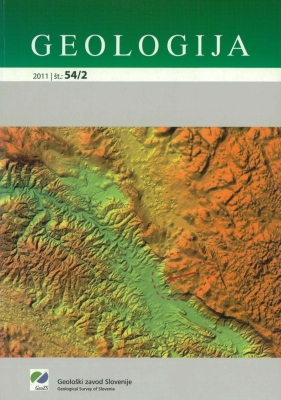Ilirskobistriški fosilni plaz - mesto na plazu
DOI:
https://doi.org/10.5474/geologija.2011.017Povzetek
Na območju Ilirske Bistrice se je verjetno konec pliocena ali v začetku kvartarja sprožil doslej največji znani plaz v Sloveniji, širok 5 km in dolg 5,5 do 6 km. Njegov nastanek je bil posledica tektonske zgradbe in dinamike premikov na tem območju. Plaz je zdrsel z morfološko dvignjenega narivnega čela Zunanjedinarskega narivnega pasu v hitro ugrezajoči Ilirskobistriški bazen, ki ima značilnosti pull apart-a ob Raškem prelomu. Zaradi tega se je spodmaknila opora pobočja. Povod za sprožitev plazu bi lahko bil močan potres v ilirskobistriški potresni coni, ki je hipotetično vezana na Raški prelom. Mesto Ilirska Bistrica leži v celoti na peti fosilnega plazu.Prenosi
Kako citirati
Placer, L., & Jamšek, P. (2011). Ilirskobistriški fosilni plaz - mesto na plazu. Geologija, 54(2), 223–228. https://doi.org/10.5474/geologija.2011.017
Številka
Rubrika
Članki

